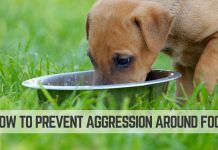Welcoming a new puppy into your home is an exciting and heartwarming experience, filled with wagging tails, playful antics, and boundless affection. However, alongside the joy of puppy parenthood comes the responsibility of ensuring your furry friend remains healthy and safe. One of the most common challenges new pet owners face is protecting their puppies from fleas and ticks—tiny pests that can cause significant discomfort and health issues. In this article, we will guide you through the essential steps to shield your beloved puppy from these unwelcome intruders. With practical tips and gentle advice, you’ll be well-equipped to keep your pup’s coat pest-free and their spirits high, allowing you both to enjoy every moment of your journey together.
Choosing the Right Preventative Products for Your Puppy
When it comes to safeguarding your puppy from pesky fleas and ticks, choosing the right preventative products is crucial for their health and happiness. With a plethora of options available, it’s essential to select products that are not only effective but also safe for your young furry friend. Here are some key factors to consider:
- Age-appropriate Solutions: Always ensure the product you choose is suitable for your puppy’s age. Many flea and tick preventatives are specifically formulated for puppies, providing the necessary protection without causing harm.
- Natural Ingredients: If you prefer a more natural approach, look for products with ingredients like neem oil or cedarwood oil, which are known for their pest-repelling properties.
- Application Method: Consider your puppy’s temperament and lifestyle when selecting between topical treatments, oral medications, or collars. Each method has its pros and cons, so choose one that fits seamlessly into your routine.
- Consult Your Vet: Before making a decision, it’s wise to consult your veterinarian. They can provide personalized recommendations based on your puppy’s health, breed, and any specific concerns you may have.
By considering these factors, you can ensure your puppy enjoys a playful, pest-free life. Remember, a little prevention goes a long way in keeping your beloved companion safe and comfortable.
Creating a Flea and Tick-Free Environment at Home
Ensuring your home is a sanctuary for your puppy, free from the nuisances of fleas and ticks, requires a strategic approach. Start by maintaining a clean living environment. Regular vacuuming is crucial, as it helps remove flea eggs and larvae that might be hiding in carpets or upholstery. Don’t forget to vacuum beneath furniture and along baseboards where these pests often lurk. Additionally, wash your puppy’s bedding weekly in hot water to kill any hitchhikers that may have found their way there.
Incorporating natural repellents can also be beneficial. Consider using essential oils like lavender, peppermint, or eucalyptus as part of your cleaning routine. Simply add a few drops to water and use it as a spray for floors and surfaces. For outdoor areas, keep your yard tidy by mowing the lawn regularly and trimming shrubs to reduce hiding spots for ticks. Creating a barrier of cedar chips around your yard can further deter these pests. By implementing these steps, you’ll create a safe and comfortable environment for your furry friend.

Regular Grooming and Inspection Tips for Early Detection
Keeping your puppy safe from fleas and ticks starts with regular grooming and thorough inspections. Not only does this help in maintaining their coat’s health, but it also ensures that any unwanted pests are detected early. During grooming sessions, use a fine-toothed comb to gently sift through your puppy’s fur. This will help you catch any fleas or ticks that might be hiding.
- Inspect behind the ears and around the neck – these are common hiding spots for ticks.
- Check between the toes and under the legs – fleas love warm, protected areas.
- Look for any unusual bumps or spots – these could indicate a tick bite or flea irritation.
Incorporate these checks into your routine, especially after walks or playtime in grassy areas. Your vigilance can prevent infestations and ensure your furry friend stays healthy and happy. Remember, your touch and attention are the first line of defense against these pesky intruders!

Understanding Natural Remedies and When to Use Them
Natural remedies offer a gentle and holistic approach to keeping your puppy free from fleas and ticks. These methods can be especially beneficial for puppies, whose sensitive skin and developing immune systems might react adversely to chemical treatments. Essential oils such as lavender, cedarwood, and lemongrass are popular choices, known for their natural repellent properties. However, it is crucial to dilute them properly before application to avoid irritation. A homemade spray can be created by mixing a few drops of these oils with water and a touch of vinegar.
In addition to topical applications, consider integrating natural practices into your puppy’s routine to further reduce the risk of infestation. Here are some effective strategies:
- Regular grooming: Brushing your puppy frequently helps to remove any ticks or fleas that may have latched on.
- Dietary supplements: Brewer’s yeast and garlic in small amounts can make your puppy less appealing to pests.
- Environmental control: Keep your home and yard clean. Vacuum regularly and wash your puppy’s bedding to eliminate flea eggs and larvae.
By incorporating these natural remedies and practices, you can create a safe and comforting environment for your puppy, free from the nuisance of fleas and ticks.
















